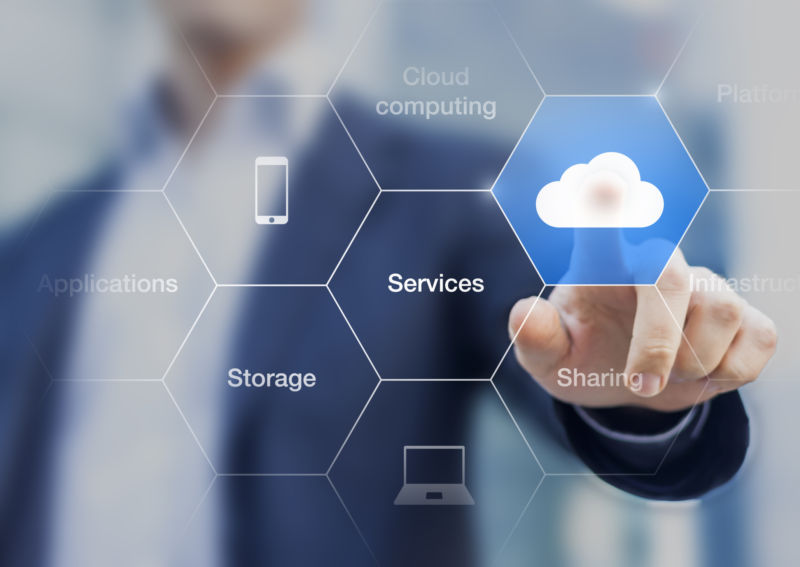
Everything old is new again. Software as a Service (SaaS) may seem like a recent innovation, but the basic concept stretches back half-a-century to IBM's mainframe timesharing of the 1960s. Even its most current incarnation pre-dates the "cloud computing" phenomenon by nearly half a decade.
SaaS supplanted the software-retail model by hosting distributed software as well the company's own data in the cloud, accessible via a Web browser. Enterprises pay for services, not software. After 16 years of SaaS, some companies have moved almost all their functions into the cloud, from enterprise software to productivity packages to telephony. According to IT research company Gartner, cloud office systems—like Office 365 and Google Apps—will achieve 60 percent total market penetration by 2018.
Despite that prediction, the majority of companies still maintain a significant portion of their software on site. Companies do this for a variety of reasons, including security and compliance concerns and the initial and long term costs of switching from software licenses they already own to a pay-as you go model. But there are also many cases in which companies suffer from decision inertia.
SaaS isn't the right answer to every software question, and there are still practical limits to what can be outsourced to a service provider. But with many SaaS providers moving to offer hybrid solutions that allow companies to maintain greater control over the elements that cause their greatest concerns, it's becoming possible for organizations to push more and more of what has long been done with traditional and even custom-coded enterprise software into a service model.
So when does SaaS make sense, and when is it better to keep things inside the firewall? If you’re on the fence, think about these factors:
Budget and Staffing
Financial considerations when deciding between SaaS and on-site solutions encompass the total cost of ownership as well as the way each type of expense is tracked in corporate financials.
"The TCO in companies like that is often more than $1,000 per user per month," said Eckhard Ortwein, a Frankfurt-based SaaS consultant and founder of MoveToSaaS, creator of the business simulation framework Lean-Case. "The problem is, it's an inefficient situation with a highly secured network and tightly managed devices running a lot of shadow IT"—software that has been purchased by individual departments, unsupported by the company's IT department—"running on top."
If companies' IT managers don't stay on top of what departments need and offer a standard catalogue of applications, either internally or through a SaaS provider, "every project starts buying [its] own services, unregulated, and nobody has control over all the services a user uses," Ortwein explained. "When it comes to cost, departments basically end up charging all software to a project like an expense. Every project selecting [its] own stuff, which is ridiculous."
That not only creates inefficiency in purchasing, Ortwein asserts, but also creates a great deal of risk of exposure of data when employees leave the company—and retain access to those cloud applications they used to do company work.
Ortwein claims that using "top-of-class cloud software in any category" can cut that inefficiency in operating costs by 30 percent, Here's how:
- Increase user productivity by moving shadow IT and legacy software to a best-in-class cloud service portfolio
- Apply balance between "Safe but useless" and "Useful but risky" with relevant standards and policies for semi-managed devices and services
- Reduce complexity using 100% cloud services enabled to run a lean network and leverage security built into the cloud
- Allow global work with customers by integrating global Data Protection and IT Security Laws as part of any solution
- Enable a cloud-based User Identity Lifecycle for employees, contractors and customers
- Deploy an IT Service Management Process centered around a central Service Catalogue with meaningful SLAs and harmonized processes
- Reduce risk exposure by establishing an active security program with a solid compliance plan
Besides a differential in how much is spent, SaaS helps companies tip the balance in budgets from capital expenses and discretionary spending to operating expenses.
Peter Yared, the co-founder of Sapho, a San Francisco-based enterprise application infrastructure company, got first-hand exposure to the budgetary impact of SaaS while he was CIO and CTO of CBS Interactive. "All these SaaS bundles incur operating expense, not [capital expenses], which reflects in earnings." Yared said as a result of committing to two and three year subscriptions from SaaS vendors instead of buying software, "Year after year, those costs went to operating expenses, not capital expenses, which allowed us to report stronger results."
Putting costs under operational expenses also affords companies better control of technology spending across the enterprise. When companies use software running on site, it often is paid for out of departmental discretionary spending with little financial oversight. Using SaaS puts the actual software use back within the visibility of both finance and IT—and could potentially prevent untended software from becoming a liability later.
reader comments
90